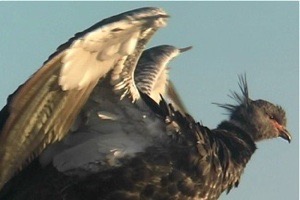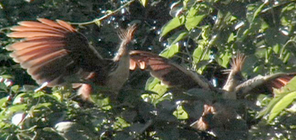I first posted the following entry on February 10, 2008:



When Darwin first described the laws of evolution some of his most significant criticism came from Saint George Jackson Mivart who argued that slow continual development of structures (like wings) would be disadvantageous to a creature and natural selection would sort them out before reaching fruition. He argued, instead, that structures like wings would have to evolve completely (or nearly so) in a sudden and dramatic event. Darwin responded with the observation that structures may evolve to serve one purpose and be used for other purposes after having developed to a particular stage. Wings (of insects and birds) have long been an example around which this argument swirled. In the end, Darwin has been proven correct. In the mid-1980’s Kingsolver and Koehl published the results of their substantial research on this issue (Evolution, 1985). It had long been argued that the most likely reason appendages (which would eventually develop into wings) would start to develop would be based on thermodynamics. Koehl and Kingsolver demonstrated that this was true (that appendages would serve a significant thermodynamic benefit) and that at the point of their maximum thermodynamic capabilities (the point of diminishing returns) they were significant enough to provide aerodynamic benefits - stability during falling, “parachuting”, gliding, and eventually flying. (While continuing to provide thermodynamic benefits.) Living primitive species, like the Southern Screamer (from Brazil, pictured above) and the Hoatzin (from Peru, pictured above) also provide clues to the intersection between thermodynamics and aerodynamics. These species have “claws” at the “elbows” of their wings which allow them to climb through vegetation with greater ease. This appears to be especially useful before young birds fledge.
On April 3, 2008 I posted the following: I am old, and, speaking of old birds, the newly discovered fossils of the pterodactyl depicted to the right (drawing of Nemicolopterus crypticus, courtesy of Michael Skrepnickaption) are 120 million years old. This species had a wingspan of less than 10 inches (25 cm) -- or about that of a Dark-eyed Junco.
The conclusion reached by researchers is that the small beast clambered in the branches because it has curved foot bones and would tend to support the gliding before flapping camp of evolutionary biologists.